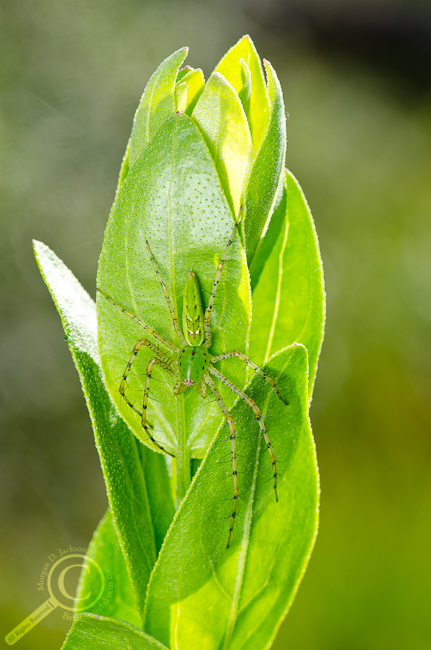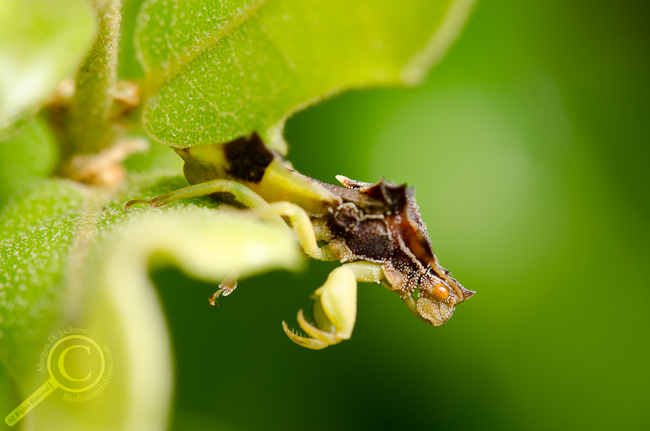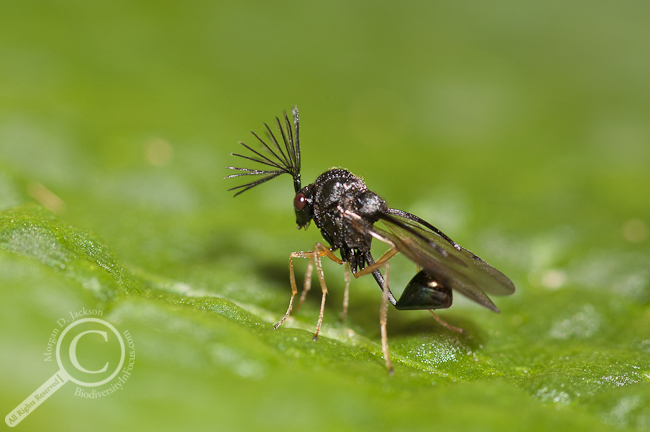Still working on flash control, I thought I’d experiment with backlighting after seeing some of Alex Wild’s phenomenal leafcutter ant photos, where the detail in vegetation popped. I only have one off-camera flash however, so I looked around until I found this Green Lynx Spider (Peucetia viridans) sitting nicely while the Florida sun shone brightly in behind, highlighting the leaves like I had hoped. From there, it was a matter of getting the correct combination of shutter speed, aperture and ISO (1/200, f14 & ISO 400 in this case) to allow for the natural light to filter through the leaves, while using diffused flash to expose the spider. I’m not thrilled with the glare above the spider, and the composition isn’t great (it’s pretty heavily centered), but considering the wind was blowing the plant and the spider all over the place, I’m just happy I managed a shot that’s in focus and which somewhat recreates the scene I had envisioned! I’ll certainly be trying this trick again on a calmer day, or with a tripod and plamp around…
If you want to see a much different photo of a Green Lynx Spider, check out Crystal Ernst’s (aka The Bug Geek) incredible portrait.




